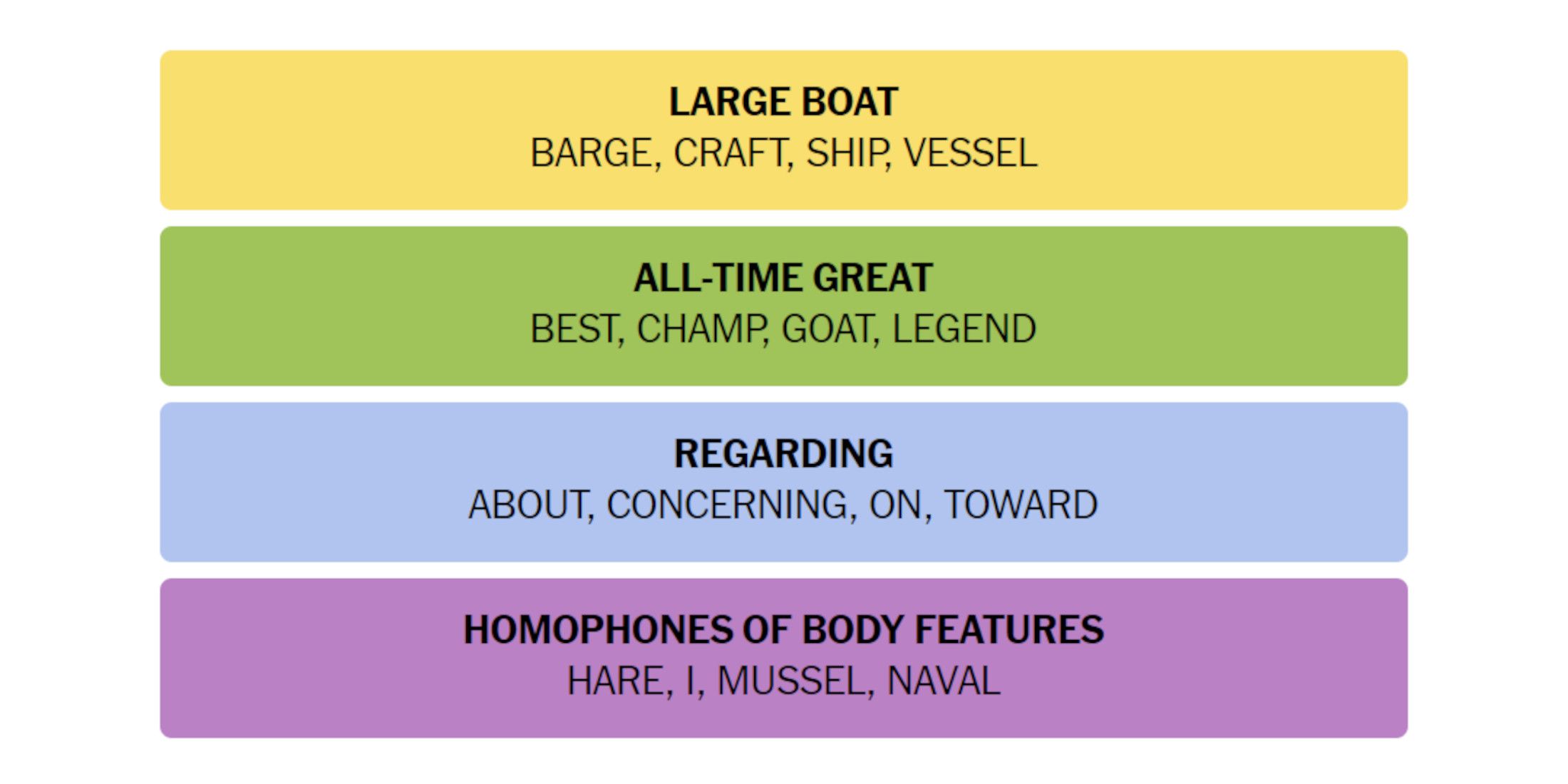The New York Times and its Influence: Nyt Connections

The New York Times, often referred to as “The Gray Lady,” is a renowned American newspaper with a rich history and an undeniable influence on global events and public discourse. Established in 1851, the newspaper has witnessed and shaped pivotal moments in history, becoming a trusted source of information and a powerful voice in shaping public opinion.
The New York Times’s Historical Significance and Role in Shaping Public Opinion
The New York Times has played a crucial role in shaping public opinion throughout its history. Its in-depth reporting, investigative journalism, and editorial stance have consistently influenced the way people perceive and understand the world. From its early days, the newspaper sought to provide accurate and unbiased news, earning a reputation for journalistic integrity that has been instrumental in its enduring influence. The New York Times’s coverage of major events, such as the Civil War, the World Wars, and the Civil Rights Movement, has helped to inform and shape public understanding of these critical periods.
The New York Times’s Reputation for Journalistic Integrity and its Impact on Global Events
The New York Times’s commitment to journalistic integrity has been a cornerstone of its influence. The newspaper has a long-standing reputation for accuracy, objectivity, and fairness in its reporting. Its investigative journalism has uncovered wrongdoing and held powerful individuals and institutions accountable, contributing to significant changes in public policy and global events. For instance, the New York Times’s investigation into the Watergate scandal, which led to the resignation of President Richard Nixon, is a prime example of the newspaper’s impact on political discourse and its role in holding those in power accountable.
The New York Times’s Influence on Political Discourse and Cultural Trends
The New York Times has been a significant force in shaping political discourse and cultural trends. Its editorial board’s opinions on major issues have influenced public debate and policymaking. The newspaper’s coverage of cultural events, trends, and movements has played a role in shaping public perceptions and attitudes. For example, the New York Times’s coverage of the #MeToo movement, which exposed widespread sexual harassment and assault, helped to raise awareness of these issues and sparked a national conversation about gender equality and power dynamics.
Exploring Connections and Relationships

The New York Times, with its vast reach and influence, is intertwined with a network of prominent figures and organizations. This intricate web of connections has shaped the newspaper’s editorial decisions and reporting, influencing the flow of information and the public’s perception of events.
The New York Times and Government Agencies
The New York Times has a complex relationship with government agencies. The newspaper’s reporters often rely on government sources for information, particularly in areas like national security and foreign policy. These relationships can be mutually beneficial, as the government can use the Times as a platform to disseminate its message, while the newspaper gains access to valuable information. However, these connections can also raise concerns about bias and the potential for undue influence.
- Leaks and Whistleblower Information: The Times has played a prominent role in exposing government secrets through leaks and whistleblowers. For example, the newspaper’s publication of the Pentagon Papers in 1971, which revealed classified information about the Vietnam War, led to a landmark Supreme Court case that affirmed the freedom of the press.
- Government Officials as Sources: The Times often relies on government officials as sources for its reporting. These officials may provide information to the newspaper in exchange for favorable coverage or to shape public opinion. For instance, the Obama administration’s use of anonymous sources to leak information to the Times about the raid that killed Osama bin Laden has been subject to scrutiny.
- Scrutiny of Government Actions: The New York Times has also been a vocal critic of government actions, particularly during times of war and political upheaval. The newspaper’s coverage of the Iraq War, for instance, was highly critical of the Bush administration’s decision to invade.
The New York Times and Corporations
The New York Times has a multifaceted relationship with corporations. The newspaper relies on advertising revenue from corporations, which can create a potential conflict of interest. However, the Times also investigates corporate wrongdoing and exposes corporate scandals, highlighting the complexities of this relationship.
- Advertising Revenue: The New York Times, like many other news organizations, relies on advertising revenue from corporations. This financial dependence can create a potential conflict of interest, as the newspaper may be reluctant to publish stories that could harm its advertisers. For example, the Times’ coverage of the tobacco industry has been criticized for being too lenient in the past.
- Investigative Reporting: Despite its reliance on corporate advertising, the New York Times has a long history of investigative reporting that exposes corporate wrongdoing. For example, the newspaper’s investigation into Enron’s accounting fraud in 2001 helped to trigger the collapse of the energy giant.
- Corporate Partnerships: The New York Times has also entered into partnerships with corporations, such as its collaboration with Google on the “Google News Initiative.” These partnerships can provide the newspaper with valuable resources and technology, but they can also raise concerns about the potential for corporate influence.
The New York Times and Individuals
The New York Times has a significant impact on individuals, shaping public opinion and influencing career trajectories. The newspaper’s reporting can make or break reputations, and its coverage of individuals can have a profound impact on their lives.
- Public Figure Coverage: The New York Times covers a wide range of individuals, from politicians and celebrities to ordinary citizens caught up in major events. The newspaper’s coverage of these individuals can have a significant impact on their public image and reputation. For example, the Times’ reporting on the Monica Lewinsky scandal played a key role in the impeachment of President Bill Clinton.
- Investigative Journalism and Individuals: The Times’ investigative journalism has often focused on individual wrongdoing, exposing corruption and misconduct. These investigations can have a devastating impact on the lives of those involved, as they can lead to criminal charges, reputational damage, and even job loss. For instance, the Times’ investigation into the Watergate scandal ultimately led to the resignation of President Richard Nixon.
- Impact on Career Trajectories: The New York Times’ coverage of individuals can also influence their career trajectories. Positive coverage can help individuals advance in their careers, while negative coverage can lead to setbacks. The newspaper’s reporting on individuals can also shape public opinion about them, which can have a lasting impact on their lives.
Impact and Implications of Connections

The New York Times’ extensive network of connections, while fostering access and insights, also raises concerns about potential bias and conflicts of interest. These connections can influence the newspaper’s reporting and editorial decisions, impacting its credibility and public trust. Examining the nature and implications of these connections is crucial for understanding the complexities of journalistic objectivity and the potential for undue influence.
Potential for Bias and Conflicts of Interest, Nyt connections
The New York Times’ connections with various individuals, organizations, and institutions create a complex web of relationships that can potentially influence its reporting. This influence can manifest in various ways:
- Source Selection: The newspaper’s connections may lead to a reliance on certain sources, potentially excluding alternative perspectives or critical voices. This can create a skewed representation of events and limit the range of information available to readers.
- Editorial Decisions: Connections with powerful individuals or organizations can influence editorial decisions, potentially leading to favorable coverage or the suppression of negative information. This can undermine the newspaper’s commitment to objective and impartial reporting.
- Financial Interests: The New York Times’ business interests, such as advertising partnerships or investments, can create conflicts of interest. These conflicts can lead to biased reporting or the avoidance of topics that may negatively impact its financial partners.
The potential for bias and conflicts of interest is not unique to the New York Times. It is a challenge faced by all news organizations, particularly those with significant resources and influence. However, the New York Times’ extensive network of connections, coupled with its reputation as a leading news source, makes it particularly susceptible to these concerns.
Nyt connections – The New York Times, a name synonymous with journalistic integrity, holds connections that reach far beyond its pages. These connections, often forged through shared values and a commitment to truth, extend even to the realm of language itself. The word “moniker,” often used to describe a nickname or a name that’s unique to an individual, reveals a fascinating history and usage moniker meaning.
This shared linguistic tapestry is just one example of how the NYT’s influence transcends the written word, shaping the very language we use to understand the world.
The New York Times has a rich history of connecting with readers through compelling narratives. One recent example is the exploration of Duncan Idaho’s legacy in jason of dune nyt , a piece that delves into the complex character and his impact on the Dune universe.
These connections, built on insightful storytelling and cultural relevance, are what make the NYT a trusted source for news and entertainment.
